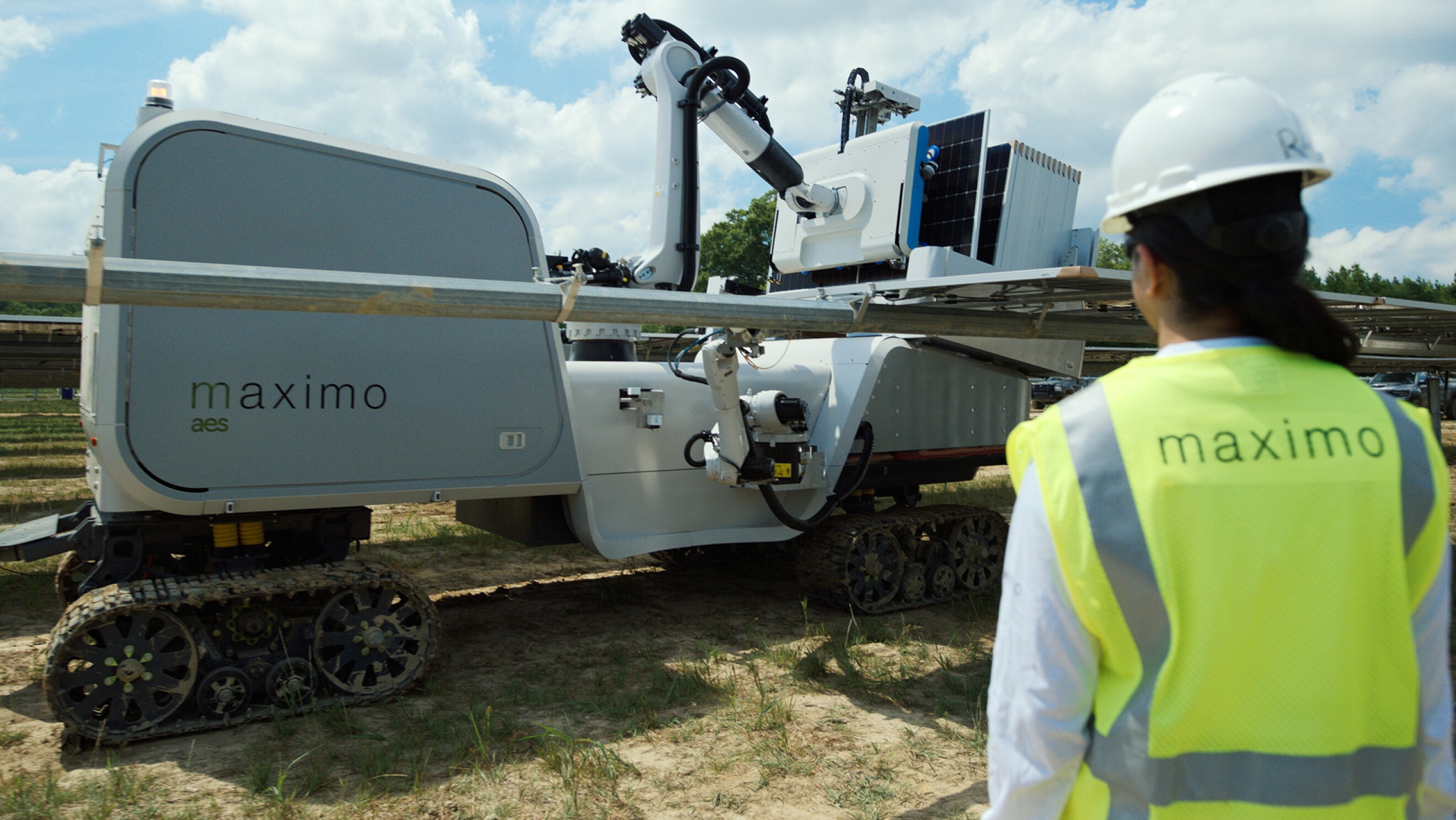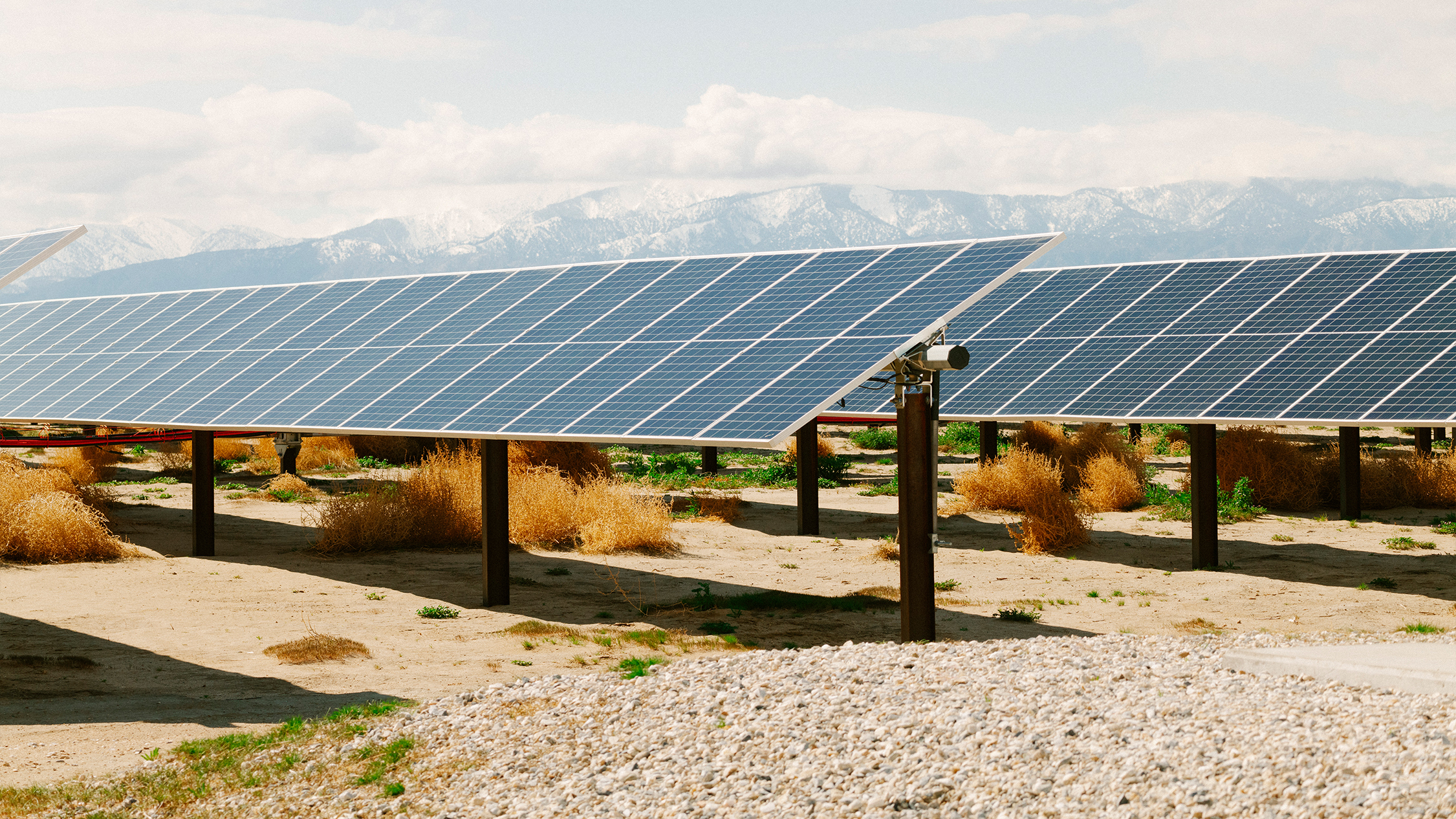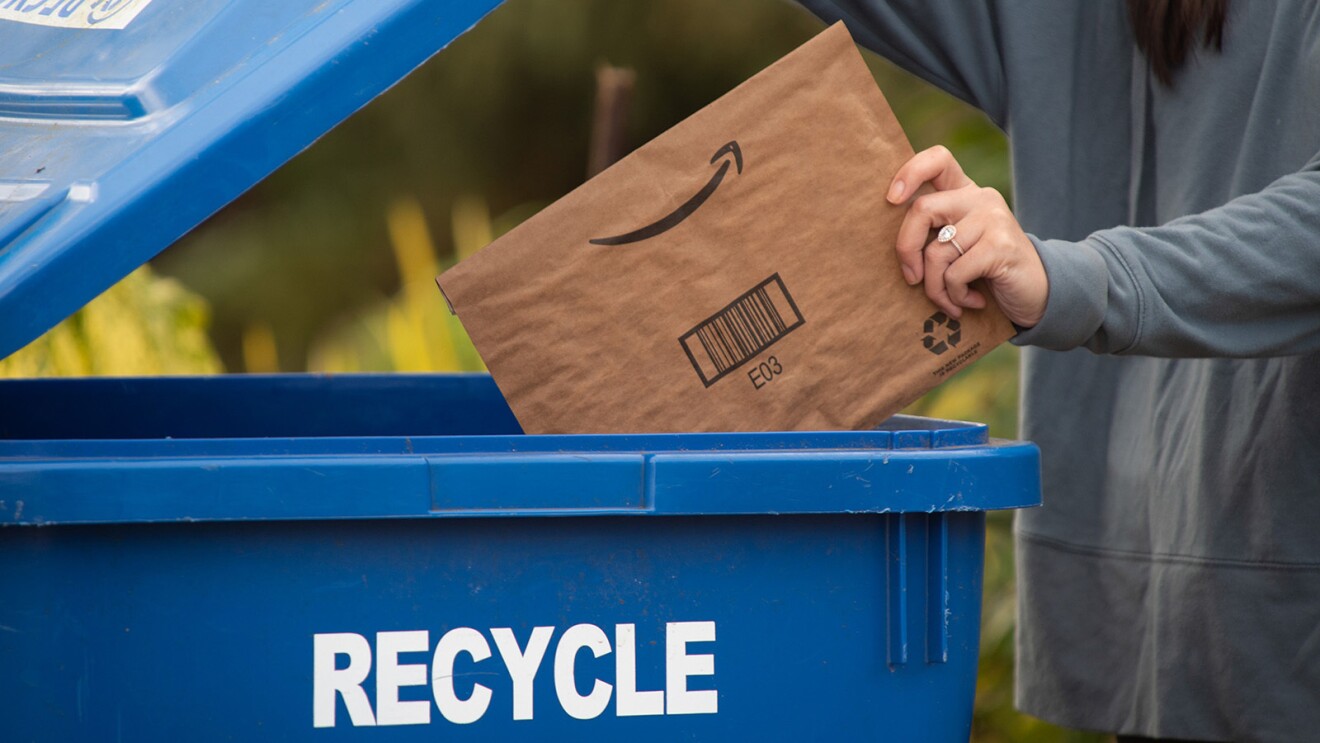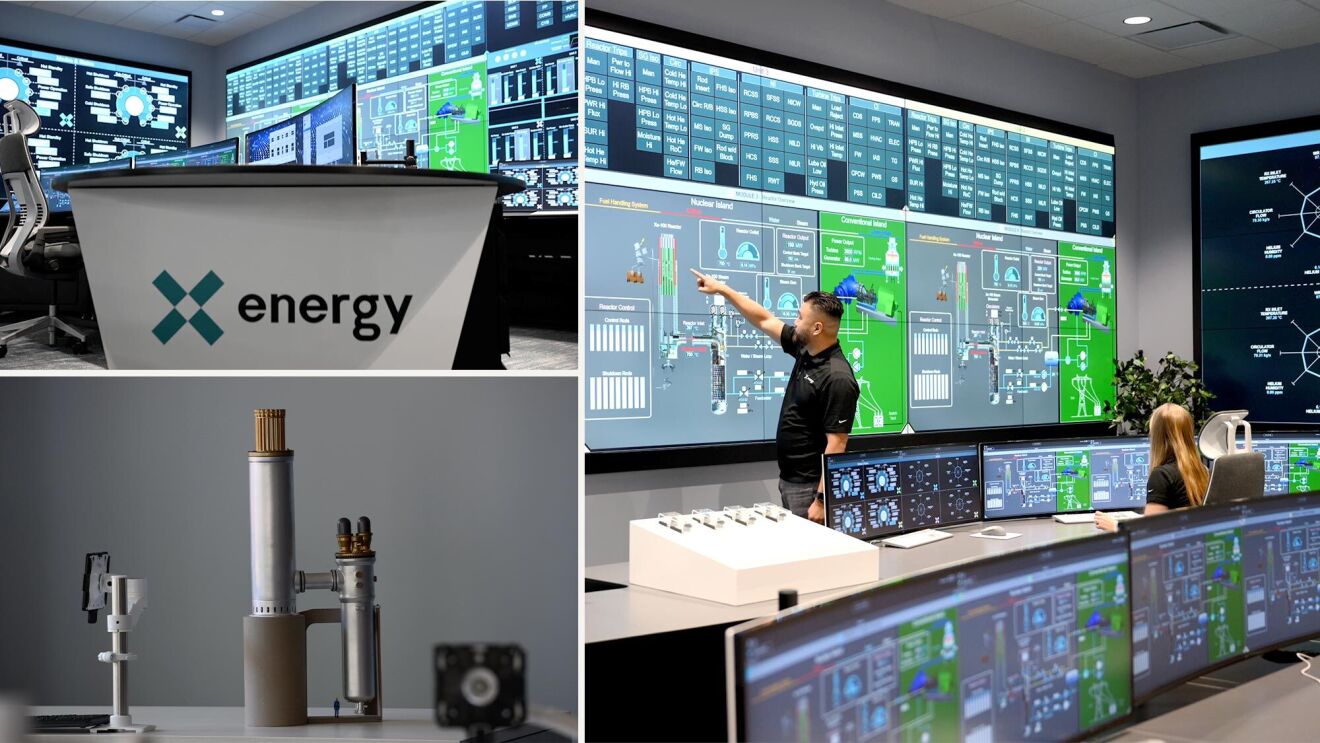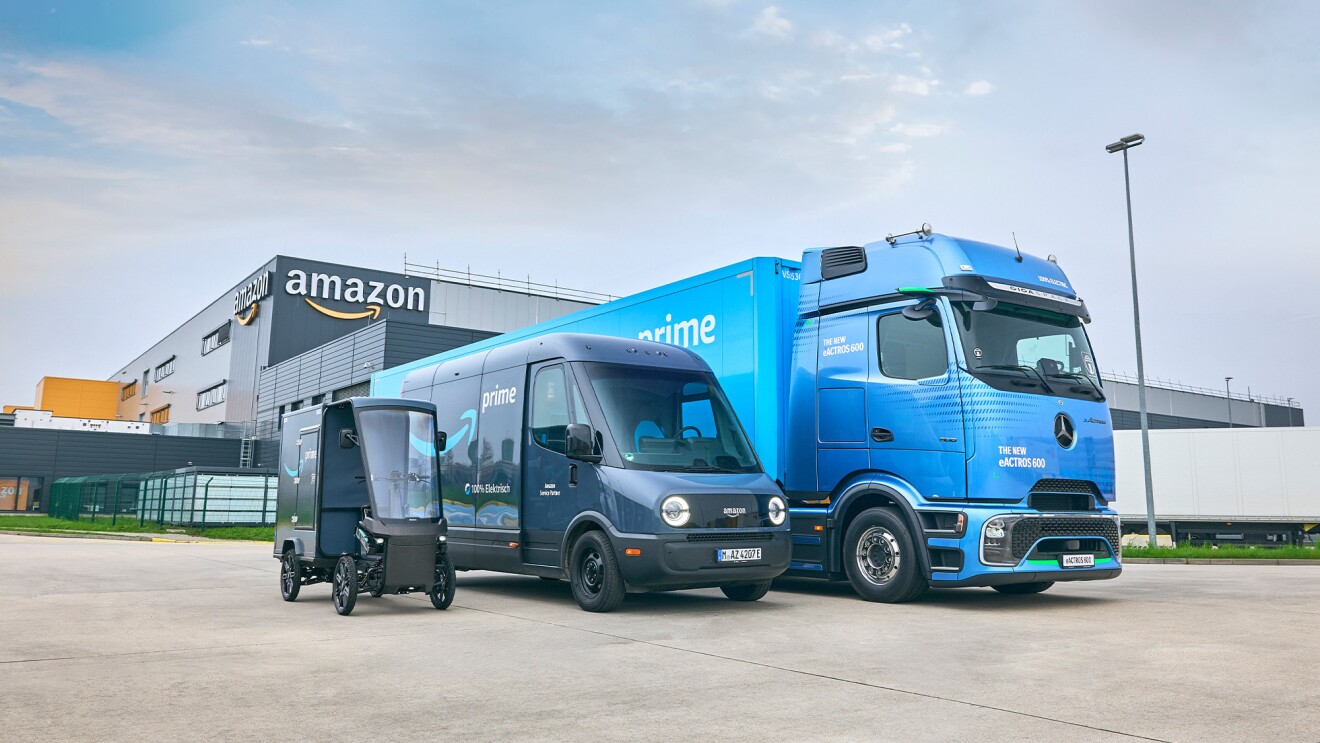A first-of-its-kind AI-powered robot is helping build Amazon-enabled solar farms faster and smarter. Meet Maximo.
Invented and owned by energy company and developer AES, Maximo can reduce solar installation timelines and costs by as much 50%, which AES says is helping accelerate project timelines, creating new workforce opportunities, and making it far less strenuous for construction crews in hot weather conditions. It’s also an important example of how Amazon and renewable energy developers are leveraging AI solutions to help address climate change at scale.

Maximo recently made its utility-scale debut at Oak Ridge Solar Farm in Louisiana—a project enabled by Amazon—where it successfully and efficiently installed solar panels while weathering high temperatures. The robot is now moving to support construction at another Amazon-backed renewable energy project in Kern County, California—Bellefield—which is the largest solar-plus-storage project in the U.S.
“AI is a critical tool that is already helping us develop sustainability solutions and address climate change at scale,” said Kara Hurst, Amazon’s chief sustainability officer. “As society’s energy needs grow, the demand for new solar and wind projects is also increasing, and we’re excited to collaborate with renewable energy developers like AES that are bringing new renewables to the grid, and prioritizing innovative technologies that can help accelerate those efforts.”

“The demand for clean energy continues to grow and at AES we believe that innovation can help us meet those needs for our customers,” said Deise Yumi Asami, founder of Maximo, AES. “Maximo is supercharging the workforce, enabling the installation of solar panels in half the time and at half the cost. It utilizes some of the most advanced technology, to ensure the fastest and most precise installation in even the most challenging outdoor environments. With Maximo, we will transform the pace of delivery of our solar projects and help meet the world’s growing energy demand.”
Cutting-edge technology, bolstered by AI
To conduct its work, Maximo uses AI features including computer vision and data to ensure precise panel placement, and real-time construction intelligence to inform its decision-making. The robot design process by AES included a range of Amazon Web Services (AWS) tools, including AWS RoboMaker, a cloud-based simulation service that enables robotics developers to run, scale, and automate simulation.

Besides automating heavy lifting, Maximo can also perform in nearly any weather or lighting condition, which is especially useful for the Bellefield project, which is located in a sandy desert area known for extreme heat. Once Maximo arrives there later this year, the robot will work alongside crews to lift hundreds of heavy solar panels into place.
According to AES, leveraging Maximo means less time in the desert heat for work crews and faster delivery of renewable energy. It also enables a broader group of people to work alongside it, and is expected to help to address workforce shortages in the long run. The demand for U.S. solar workers is expected to double in less than 10 years. However, 90% of solar firms report they have had challenges finding qualified workers.

Once complete, Bellefield will include a 1 GW solar farm paired with up to 1 GW of battery storage. The battery is able to store excess solar energy created during the day and release it at night, or when the grid’s energy is in high demand, providing a steady supply of carbon-free energy for more hours of the day. Bellefield will be capable of producing enough energy to power 467,000 California homes annually.
Maximo is not the only example of how Amazon and AES are enabling renewable energy projects and AI solutions to help address climate change. At Baldy Mesa, another solar-plus-storage farm enabled by Amazon, and developed, owned, and operated by AES, machine learning models powered by AWS are helping predict when and how the project’s battery units should charge and discharge energy back to the grid.
